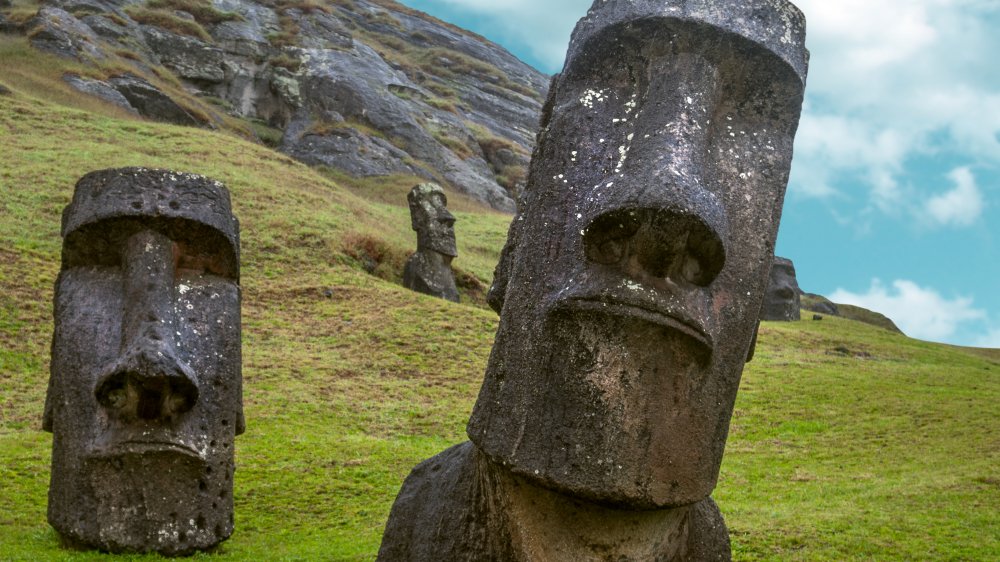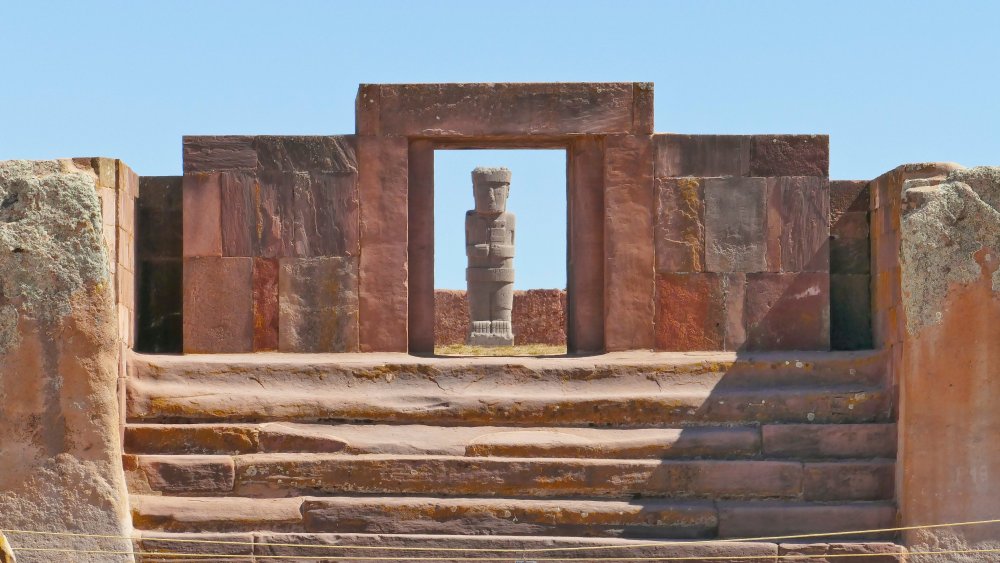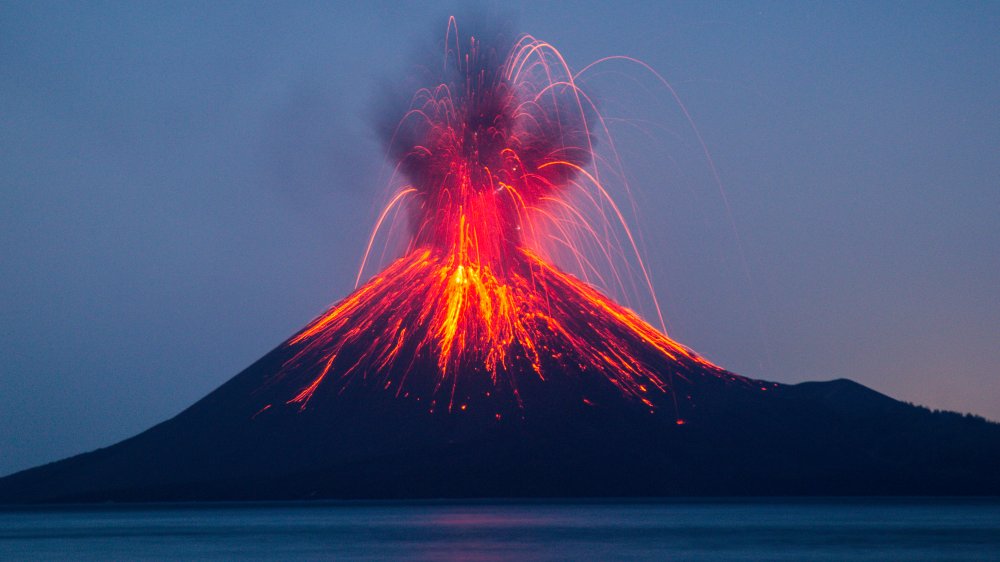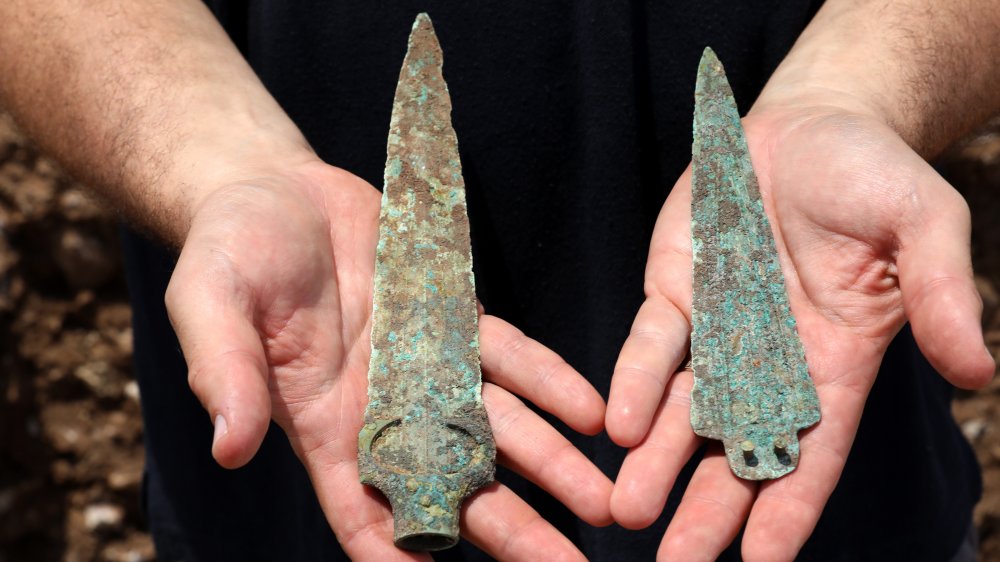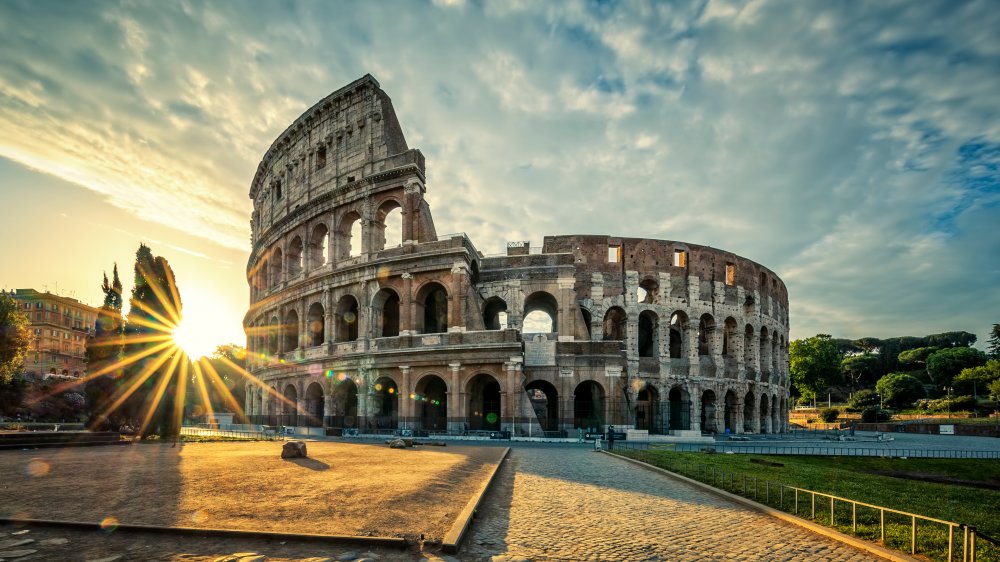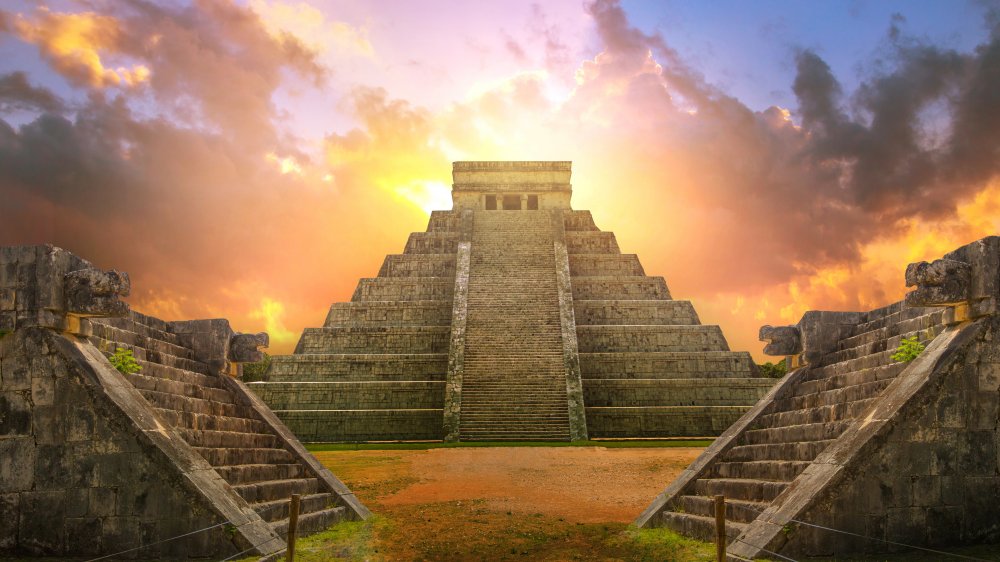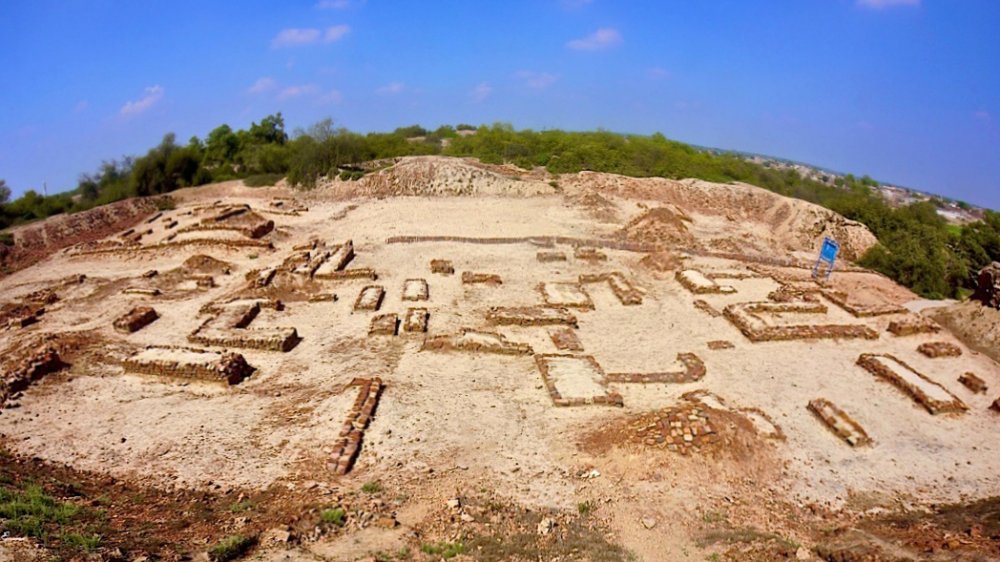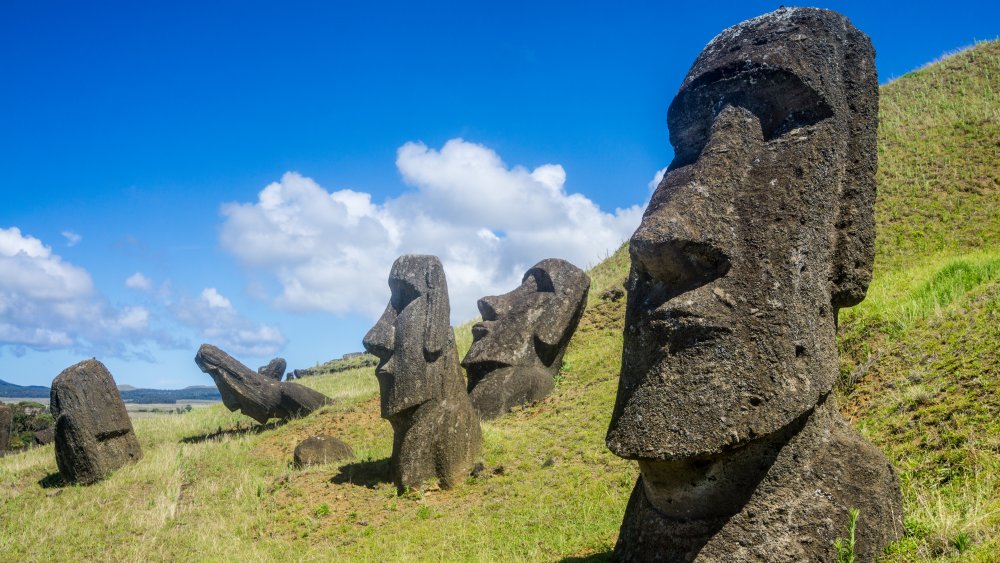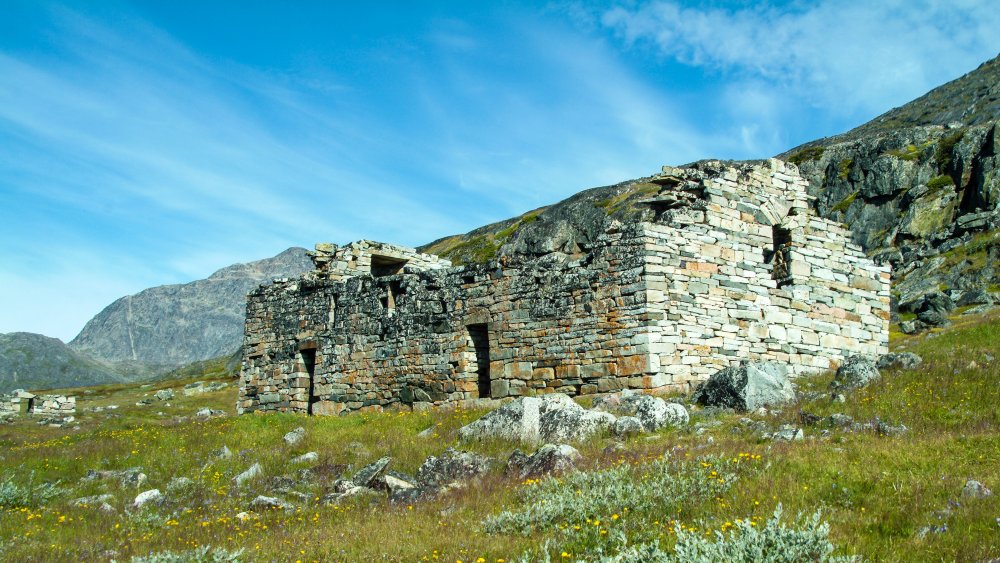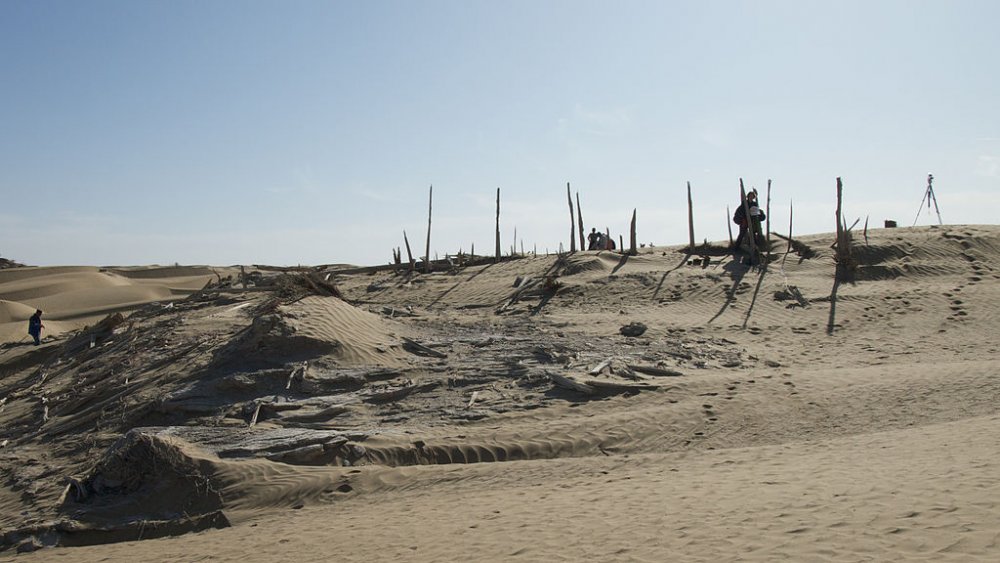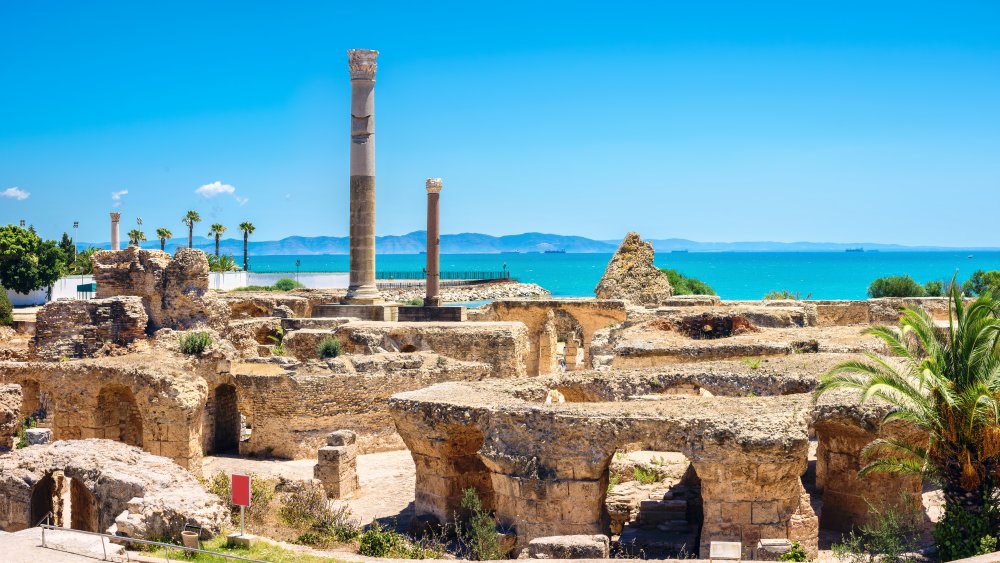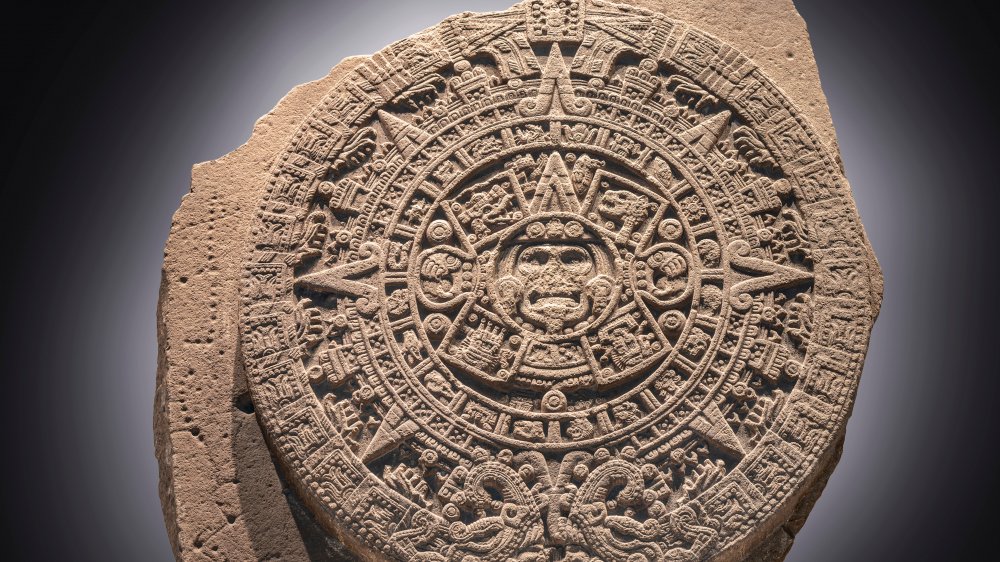Crises That Destroyed Civilizations Practically Overnight
Civilization seems like a sort of permanent part of our lives. After all, it was already in progress when we got here, so it's reasonable to assume it will continue, in at least some shape, forever. But as even a casual student of history knows, civilizations — even glorious, world-dominating civilizations — have fallen many times in the past, often leaving behind surprisingly faint traces.
Usually this is a slow process, a gradual decline resulting from many forces leading to cultural fragmentation, political revolution, and economic ruin. But when an acute crisis develops, something that a society couldn't anticipate, this process can be accelerated to the point where a civilizations that took centuries to develop can vanish almost overnight, so quickly that in some cases there's almost nothing left to show they existed at all.
And the civilizations we're talking about here all flourished for a time. Their citizens tamed the wilderness and started families, built cities, and created rich, vibrant cultures ... and then something suddenly changed, and it was all gone, destroyed in an instant.
The city of Tiwanaku suffered an epic drought
Before the Incans built their own historic empire, the city of Tiwanaku flourished 13,000 feet above sea level in what's modern-day Bolivia. Between the 6th and 11th centuries, this ancient city was a bustling metropolis. According to Live Science, at its height, there were probably 10,000 people living in Tiwanaku, which is a lot of people for the time. (For example, it's estimated that the population of London was a maximum of 18,000 in the 11th century.) Covering more than two square miles, Tiwanaku was laid out in an orderly grid, and there's archaeological evidence that it held great power and exerted a lot of influence over the surrounding areas. As evidence of its prosperity and importance, the city holds the remnants of several monumental buildings, including a huge pyramidal structure in the city center.
And then, suddenly, the city was abandoned and quickly forgotten. The prevailing theory is that a catastrophic drought hit the region, turning what had been a viable location for a great city into a dry and barren spot that couldn't support the population any more. Scientist Lonnie Thompson, Ph.D., has tracked huge swings in precipitation in the area, including droughts that lasted decades or even centuries, and they correspond exactly with the fall of Tiwanaku.
A volcano destroyed the Minoan Empire
Mentioned in Homer's Odyssey and often suggested as the possible inspiration for the lost city of Atlantis, the ancient civilization on the island of Crete was once incredibly influential. As National Geographic notes, the civilization on Crete that modern historians refer to as the Minoan civilization existed as long ago as 3000 BCE, and it grew to be one of the most powerful cultures in the ancient world.
And yet this vibrant civilization vanished so completely that we don't even know what the people were actually called. (The word "Minoan" is a modern appellation inspired by the mythical King Minos of Minotaur fame.) The culprit? The supervolcano Thera, which erupted big time around 1600 BCE with the force of two atomic bombs, wiping out many nearby Minoan settlements instantaneously. More destruction soon followed as the eruption sent tsunamis sweeping the area, clouded the air with rock and debris that made the weather extreme and unpredictable, and ruined the maritime economy that sustained the Minoans. It's theorized that even if the core Minoan civilization survived the disaster, the cities that traded with them were all completely gone, making it impossible for them to survive.
The Late Bronze Age Collapse was a perfect storm of disasters
If imagining one vibrant, thriving civilization suddenly collapsing is exciting, how about ... all of them, all at once? That's basically what happened in the very late 13th and early 12th centuries BCE in something historians call the Late Bronze Age Collapse. And it only took about 50 years to happen. As Eric Cline, professor of classics and anthropology at George Washington University explains (via Haaretz), the nations of the eastern Mediterranean at the time were all interconnected politically, economically, and culturally. What happened over the course of a few decades wasn't a single crisis but several occurring simultaneously, so close to each other that people barely had time to react to one challenge before the next wave hit.
Just as new technology was making the bronze-based economy obsolete (it was called the Bronze Age for a reason), Egypt was invaded by a warlike clan referred to as "the sea peoples," which weakened the state,and it never recovered. Drought afflicted the entire region, destabilizing agriculture and making many urban centers unsustainable, a situation that was exacerbated by plague. Earthquakes caused significant damage, and political unrest saw a wave of rebellions roil the region, and it all happened over the course of a few decades.
The end result? Every single major civilization in the eastern Mediterranean collapsed, including the Mycenaean kingdoms, Babylonia, the Hittite Empire, the Egyptian Empire, the Ugarit and the Amorite states, the Luwian states, and Canaan. Many cities were abandoned forever.
The Western Roman Empire was destroyed by the Goths
Some histories make it sound like Rome entered into a slow, grinding death spiral that took centuries, and that's exactly what happened if you consider the Roman Empire to be one homogeneous civilization. But by the 4th century CE, Rome was irreparably split into eastern and western halves, and the West was much less cohesive and stable than the East (which eventually became known as the Byzantine Empire to historians, although they still called themselves Roman). Even so, as Quartz points out, the Western Roman Empire wasn't doomed by any means. It was just fragile.
But what finally sent it into the dustbin of history was a migrant crisis, sparked when the Goths (a Germanic tribe that had often battled and even invaded Rome) fled the invading Huns and struck what was a fairly common deal back in those times. If allowed to settle in Roman territory, they would be loyal citizens and supply troops for Rome's armies. But the Roman officials in charge of the settlement were so corrupt and incompetent that the Goths quickly thought better of their bargain. As their situation worsened, the Goths went on the warpath, and as they were already inside the empire's borders, they made quick work of completely decimating the Western Roman Empire, sacking Rome in the year 410. While there were Western Roman emperors after that date, the Goths were the real power, and the empire was gone in a flash.
The Mayan Empire vanished thanks to famine
The Mayan Empire is an enigma. For centuries, it flourished in an area encompassing Mexico and Central America, building large, vibrant cities and maintaining a population nearly 20 million strong at its height. And then, over the course of about a hundred years, the empire completely collapsed, scattering its people across the area as its cities went dormant and fell into ruin. While there are many theories on how such a powerful and advanced civilization could simply disappear like that, in 2005, historian and anthropologist Jared Diamond speculated that a lengthy drought starved the Mayans out of their cities and into the countryside. And as pointed out by Smithsonian magazine, scientific studies have supported Diamond's theory.
Analyzing data from archaeological sites, scientists have established a terrible period of drought occurred at the same time the Mayans entered speed-round collapse. At the same time, the Mayans were cutting down trees at a furious pace to clear land for agriculture and to fuel their building projects. It's theorized that this rapid deforestation made the drought worse, which caused widespread crop failures. When people can't eat, they're not going to hang around your beautiful cities, and they went looking for someplace they could actually survive in. As a result, the Mayan Empire became the Mayan Diaspora over the course of a few decades.
The Indus Valley Civilization was crippled by some heavy duty crises
We don't often think about where our food comes from, but history shows that one of the quickest ways to erase a civilization is to starve it. That's what happened to the Indus Valley Civilization (IVC), a sprawling empire that encompassed much of modern-day modern Pakistan, eastern Afghanistan, and northwestern India more than 8,000 years ago. After existing and thriving for thousands of years, the IVC disappeared in about a century around 1800 and 1700 BCE. And while the culture of the IVC continued for a while, the civilization itself had ceased to exist in a formal sense.
In a paper published in Nature, researchers at the Indian Institute of Technology Kharagpur presented data showing that the word "collapse" is probably not accurate when it comes to the IVC. Instead, the IVC became "de-urbanized" due to drought and the resulting famine. Droughts are crises even in the modern era, causing crops to fail and populations to starve. What researchers found is that the citizens of the Indus Valley Civilization began fleeing their cities at the same time they changed what they were growing and where they grew it, switching to drought-resistant crops like rice. Rice and similar crops have a much lower yield, and so this new agricultural approach couldn't support the large populations of urban centers, and thus an entire civilization drained away into the country.
The civilization on Easter Island was destroyed by a rat crisis
Everyone knows exactly three things about Easter Island. It's an island, it has enormous stone heads littered all over it, and the native population cut down all the trees on the island and destroyed their own civilization within a few decades. When Captain Cook arrived there in 1774, he found just a few hundred desperate survivors. However, while there's no doubt the Rapa Nui civilization collapsed very quickly, the crisis that precipitated that collapse probably wasn't the short-sighted, purposeful deforestation of cut-and-burn farmers ... but an invasion of hungry rats.
Anthropologists Terry Hunt and Carl Lipo argue in their book The Statues that Walked (via NPR) that the trees on Easter Island did in fact die off but not because they were cut or burned down. Instead, they died off because rats that stowed away on the islanders' canoes ate their roots. Once the rats were introduced, they found zero predators to slow their population growth and a huge supply of succulent tree roots to eat. Hunt and Lipo found that rat populations can double every 47 days under such conditions, meaning that Easter Island likely had a rat population of several million in just a few years. The trees never stood a chance.
It's likely the Rapa Nui survived for a while by eating the rats — hey, under the circumstances it seems fair — but their civilization was all but gone within a few decades.
Viking Greenland fell to the Little Ice Age and globalization
Vikings arrived in Greenland in the late 10th century when Erik the Red showed up with 14 long boats and decided to stay. For centuries, the Vikings thrived in Greenland. There's correspondence from the colony (which never grew very large) in the early 1400s that implies everything was just fine as late as 1424. But just a few years later, the Vikings were gone, their settlement completely abandoned. Ever since, the exact reason for the complete disappearance of this small civilization has been a mystery, but archaeologist Thomas McGovern believes (via Smithsonian) that twin crises destroyed them.
First, the Vikings arrived in Greenland during an unusually warm period of time that made both the sea travel there and farming possible. Of course, this warm period also preceded what's known as the Little Ice Age, which reversed both of those factors. At the same time, the main export that the Greenlanders relied on, walrus ivory, declined in value because superior sources of ivory began to be available due to exploration and increasingly robust sea trade. In other words, a local economy expanded to become a global economy, and the Vikings couldn't compete. With their home — already barely supporting them — becoming colder, more barren, and harder to get to, they were forced out in a matter of years.
The Kingdom of Niya disappeared thanks to an economic disaster
In an age when we all expect drones to begin delivering our morning coffees any moment now, it's hard to imagine there was a time when the only way to get stuff from one part of the world to the other was to haul it by land. The Silk Road was a network of trade routes used for just that, and many civilizations sprang up along with it, relying on the merchant caravans that traveled along the route for sustenance. The Kingdom of Niya was one such civilization, a cosmopolitan empire centered on the city of, you guessed it, Niya. In the third century it was a thriving, important society. Then Niya just up and vanished.
In fact, in his book Niya: Paradise Regained, author writer Li Xiguang notes (via China Daily) that when the city was rediscovered in the early 20th century, the houses still held tools and preserved food in good order. The city had been buried under centuries of sand, but it was as if its citizens had simply left. There was no sign of panic, of disaster, or other problems. That's because the crisis that destroyed Niya was probably economic. The importance of the Silk Road faded as sea routes were discovered. Without constant travel along these land routes, land-locked Niya was starved, and its people simply moved away looking for better prospects.
The civilization of Carthage was destroyed by a very angry Rome
The Roman Empire endures in our imagination because of its size, its enduring influence on our culture, and probably the hot toga fashions. But it's easy to forget that for Rome to live, a lot of other civilizations had to die (or at least be absorbed into Rome as a tax-paying colony).
When Rome was still a republic and just starting to flex its economic and military muscles, one of its most potent rivals was the city of Carthage in northern Africa. If you recall Hannibal and his elephants crossing the Alps, that was Carthage. Over the course of a century, Rome and Carthage fought a series of wars (the three Punic Wars) for control of the Mediterranean. Carthage actually ceased to be a great power after the Second Punic War, but Rome still itched to destroy it. In fact, Roman senator Cato the Elder famously ended every single speech with the phrase, "I am of the opinion that Carthage ought to be destroyed."
So when Carthage went to war with a Roman ally, Rome declared war again, and the Third Punic War was destined to be Carthage's last. Rome besieged the city, most of its citizens starved, and historian Richard Miles writes that when the survivors surrendered, they were sold into slavery and the city was burned to the ground. Carthage was a mighty civilization for centuries, and it disappeared over the course of about five years. And here's a fun fact. The Third Punic War wasn't officially ended until 1985, when the mayors of Rome and Carthage made it official.
The Aztec Empire suffered from an epidemic
It's one of the most spectacular collapses of a civilization in recorded history. When Hernando Cortés arrived in Mexico in 1519, he encountered an Aztec Empire with a population of about 25 million people. A hundred years later, the Aztec Empire was gone, and there were perhaps a million people left. But as journalist Ewen Callaway wrote in Nature, this wasn't the result of Spanish military brilliance but rather a series of epidemics that burned through the Aztec population, killing tens of millions over the course of a few decades.
The most likely culprit was a strain of Salmonella that the Spanish brought with them. Having never been exposed to the disease before, the Aztecs had no herd immunity. Modern analysis of burial sites indicates that as much as 80 percent of the population died as a result. Of course, having the conquistadors roaming about slaughtering your people didn't help, but you can only imagine how different history would have been if the Aztecs had remained healthy.
After the Romans left, Britain fell to a plague
It's easy to forget that Britain stopped being run by the British a very, very long time ago. When Rome was half-heartedly trying to conquer the island, Celtic warlords (aka the British) were their main opponents. When Rome abandoned the island, the British gave up on the cities and moved back into their traditional lands, unified to some extent by a common interest — not letting the pagan Angles and Saxons (aka the English) living in Anglia and Kent invade.
But as historian John Morris notes, even as the British were maintaining their culture in the wake of Roman domination, Rome had one last gift to offer in the form of Justinian's Plague (named after Emperor Justinian), which erupted in Constantinople in 541, ravaged westward, and arrived in Britain a few years later. The British, who traded a lot with Europe, were devastated by the disease. However, the Angles and the Saxons — who didn't trade with Europe much — were unscathed. And when they noticed no resistance to their raids, they smelled opportunity and invaded. And so Britain went Anglo-Saxon over the course of a few years, and a thriving culture was almost completely erased.
